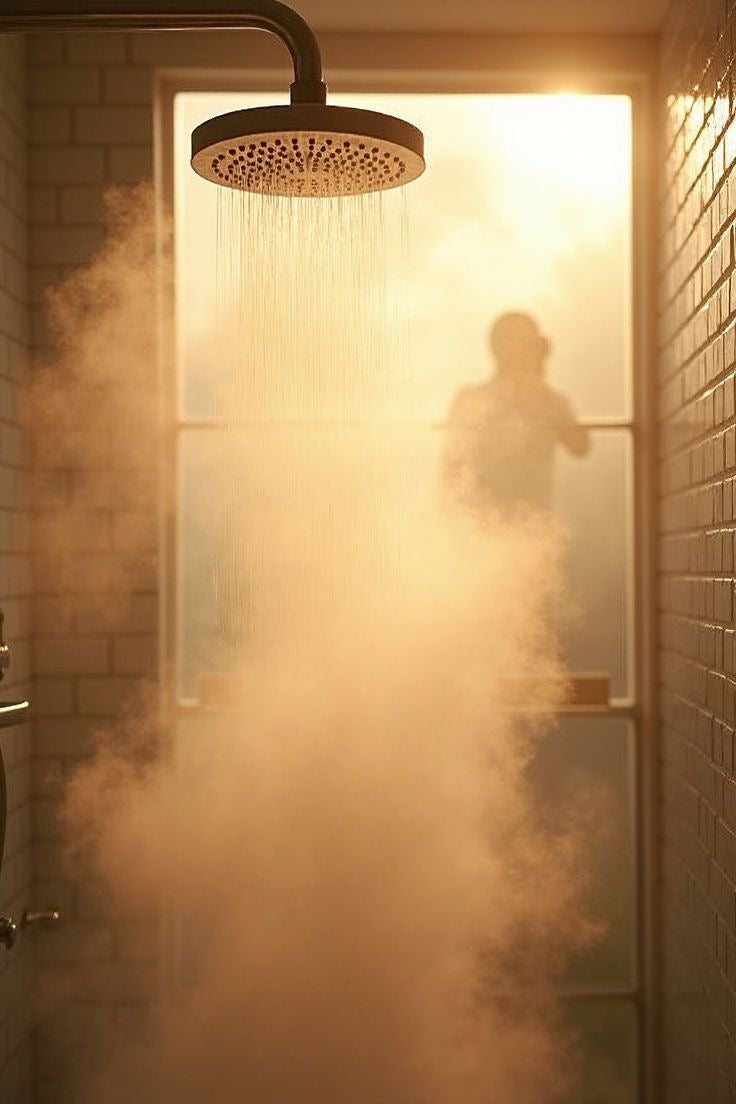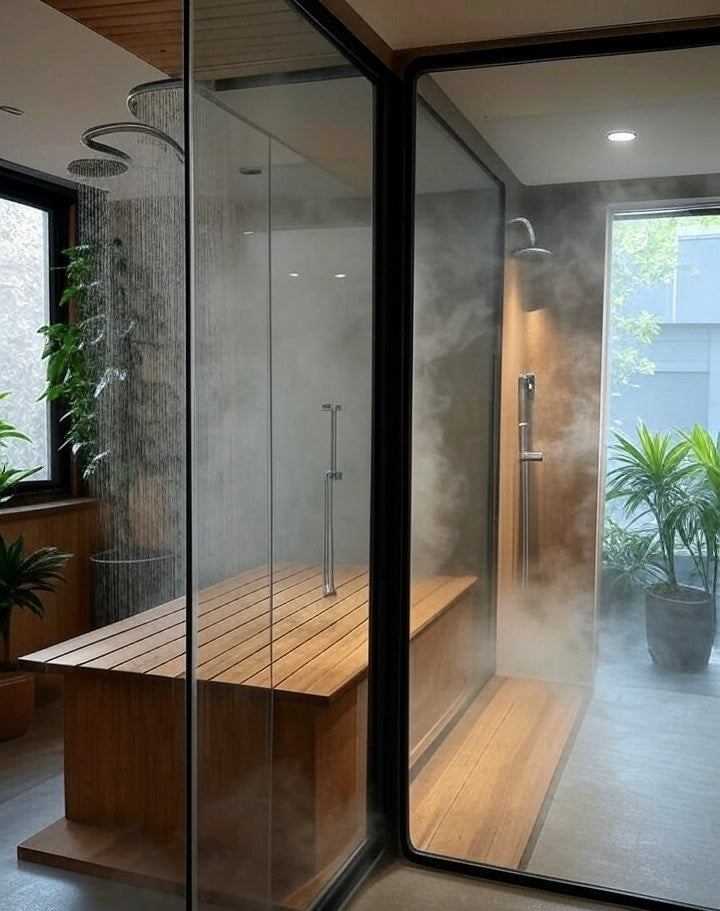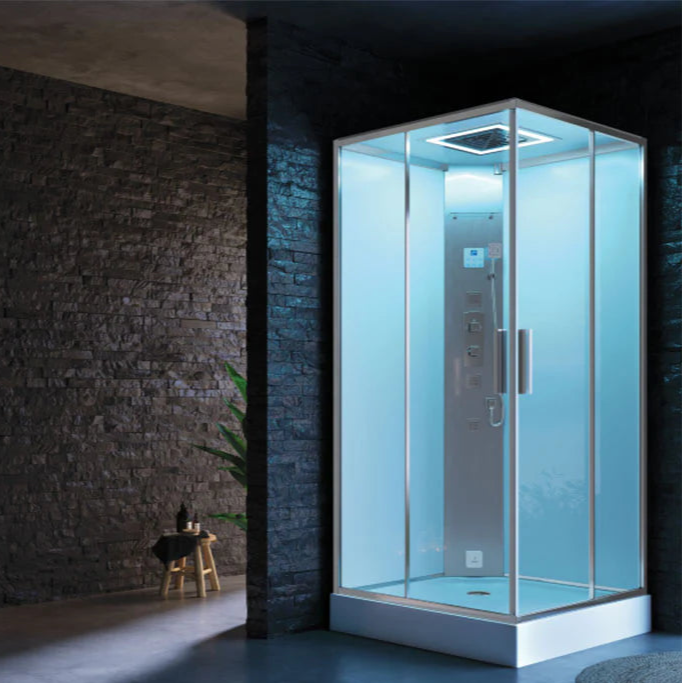Love the warmth of your Home Sauna or Garden Sauna a bit too much? The short answer: Yes, daily Infrared Sauna use can be safe and beneficial — if you know how to do it right. Keep reading to discover how Outdoor Saunas and Infrared heat can boost your health, when to pump the brakes, and how to fine-tune your routine for long-term gains.

The Allure of Daily Infrared Sauna Use: Benefits and Expectations
Understanding Infrared Sauna Technology: How it Differs
Near-Infrared (NIR) vs. Mid-Infrared (MIR) vs. Far-Infrared (FIR)
Infrared saunas use light wavelengths to heat the body directly, rather than warming the air.
Near-infrared (NIR) penetrates the skin's surface, often used for wound healing and skin renewal. Mid-infrared (MIR) goes deeper, supporting circulation and pain relief. Far-infrared (FIR) penetrates even further into soft tissue, promoting detoxification, relaxation, and improved blood flow. Each type has unique effects and benefits, often combined in full-spectrum saunas.
Direct Heating vs. Air Heating
Traditional saunas heat the air, which in turn warms your body. Infrared saunas bypass this, using radiant heat to warm you directly.
This makes infrared sessions more comfortable for those who struggle with high heat and allows for a gentler experience at lower ambient temperatures.
Potential Health Benefits of Consistent Use
Detoxification and Toxin Elimination
Sweating in an infrared sauna supports the body’s natural detox pathways. Heavy metals, BPA, and other toxins may be excreted via sweat.
Over time, regular use may enhance metabolic function and lymphatic drainage, contributing to an overall sense of wellbeing.
Pain Relief and Muscle Recovery (e.g., for arthritis, chronic pain, post-workout)
Infrared heat penetrates muscles and joints, offering relief from stiffness, soreness, and inflammation. Athletes and individuals with chronic pain conditions often report improved mobility and faster recovery times.
Cardiovascular Health and Circulation (e.g., blood pressure, heart function)
Infrared sauna sessions raise heart rate and promote vasodilation, mimicking cardiovascular exercise. This can support healthy blood pressure and heart function, particularly when used consistently.
Relaxation, Stress Reduction, and Improved Sleep
The calming warmth of infrared heat helps lower cortisol levels and ease nervous system tension.
This can promote better sleep, reduce anxiety, and foster a deeper sense of calm.
Skin Health and Appearance (e.g., collagen production, pore cleansing)
Increased blood flow can enhance skin tone, reduce acne, and stimulate collagen production. Many users notice clearer skin and a healthy glow after regular sessions.
Immune System Boost
Raising the body’s core temperature may simulate a fever-like state, activating the immune response. Over time, this could lead to improved resilience against seasonal illnesses.
Weight Management (Clarify calorie burning vs. fat loss)
Infrared saunas increase calorie expenditure, but this shouldn’t be confused with fat loss. Water weight may drop temporarily, but long-term weight management depends on diet and exercise alongside sauna use.
Is Daily Use Advisable? Safety, Risks, and Considerations

When Daily Use is Generally Safe (and for whom)
Healthy Individuals with No Pre-existing Conditions
If you're generally healthy, daily infrared sauna sessions can be safe and beneficial.
Start with shorter durations and moderate temperatures before gradually increasing exposure.
Gradual Acclimation
Allow your body time to adjust to the heat. Begin with 10–15 minutes per session and increase as tolerated.
Hydrate well and monitor how your body responds.
Potential Risks and Side Effects of Overuse
Dehydration and Electrolyte Imbalance
Sweating causes fluid and electrolyte loss, especially with frequent use. If not replenished, this can lead to headaches, fatigue, or dizziness.
Heat Exhaustion and Overheating
Overly long sessions or insufficient hydration may lead to nausea, faintness, or heatstroke. Always listen to your body and keep water nearby.
Low Blood Pressure (Hypotension)
Heat can cause blood vessels to dilate, leading to a drop in blood pressure. If you feel lightheaded or weak, reduce frequency or session time.
Skin Irritation and Sensitivity (e.g., eczema, rosacea)
Some skin conditions may flare up with frequent heat exposure. Consider shorter sessions and consult a dermatologist if needed.
Long-term Effects of Infrared Radiation (clarify current research)
Current research shows minimal long-term risk with moderate use. However, data on prolonged daily exposure is still emerging.
Moderation and rest days are advisable, particularly for sensitive individuals.
Who Should Exercise Caution or Avoid Daily Use?
Individuals with Cardiovascular Conditions (e.g., high blood pressure, heart disease)
Consult a healthcare professional before starting any sauna routine. Sudden shifts in heart rate or blood pressure can be risky for certain conditions.
Pregnant Women
Due to the impact on core temperature, pregnant individuals are advised to avoid infrared sauna use altogether.
Individuals with Kidney Disease
Kidneys help regulate fluid and electrolyte balance. If compromised, sweating heavily can pose a danger.
Those on Certain Medications (e.g., diuretics, blood pressure drugs)
Some medications impair heat regulation or increase dehydration risk. Check with your GP or pharmacist before use.
Older Adults and Children
Elderly users and children may be more sensitive to heat stress. Supervised, shortened sessions with adequate hydration are key.
Individuals with Neurological Deficits
Conditions affecting heat perception or mobility may increase the risk of overheating or injury.
Unhealed Wounds or Post-Surgery
Infrared heat may interfere with healing processes or irritate sensitive tissues. Wait until fully healed before use.
Compromised Immune System
While sauna use may boost immunity in healthy people, it could place added stress on a weakened system.
Always seek medical clearance first.
Optimizing Your Daily Infrared Sauna Routine: Tips for Success

Pre-Sauna Preparation
Hydration Strategies (before, during, and after)
Drink plenty of water before entering and keep a water bottle within reach. Coconut water or electrolyte drinks can help replenish lost minerals post-session.
Showering and Skin Prep
A quick rinse before use removes lotions, oils, and dirt, enhancing detoxification. Dry brushing can stimulate circulation further.
When to Eat (and avoid alcohol)
Avoid heavy meals within an hour of sauna use. Alcohol increases dehydration risk and should be skipped beforehand.
What to Wear (or not wear)
Light, breathable clothing or a towel is best. Synthetic fabrics can trap heat and irritate the skin.
During Your Session
Recommended Session Length and Temperature
Start with 15–20 minutes at 45–60°C. Experienced users may extend to 30–45 minutes depending on comfort and tolerance.
Listening to Your Body and Recognising Discomfort Signals
If you feel dizzy, nauseous, or overly tired — exit immediately. Signs of overheating should never be ignored.
Enhancing the Experience (e.g., stretching, meditation, digital detox)
Stretching, breathwork, or meditating can deepen relaxation. Leave the phone outside and treat your session as a mindful reset.
Sweating – What to Expect (and if not sweating)
It may take a few sessions before you sweat profusely. Consistency helps your body adapt.
Positioning for Optimal Exposure
Sit upright for full-body exposure, or recline slightly if your sauna allows. Avoid blocking the infrared panels.
Post-Sauna Care
Gradual Cool-Down
Let your body return to normal temperature slowly. Sit or lie down with water before jumping into a cold shower.
Post-Sauna Shower (temperature considerations)
A lukewarm or cool shower removes sweat and toxins from the skin. Avoid harsh soaps which strip oils.
Continued Hydration and Electrolyte Replenishment
Replace lost fluids with water, herbal tea, or electrolyte drinks. Add light snacks with potassium and sodium for balance.
Frequently Asked Questions About Daily Infrared Sauna Use
How often should I use an infrared sauna?
3–4 times a week is ideal for most. Daily use can be safe with proper hydration and monitoring.
Can infrared saunas help with weight loss?
They may increase calorie burn but don’t substitute for diet or exercise. Think of it as a helpful supplement — not a miracle fix.
What are the cons of an infrared sauna?
Overuse can lead to dehydration, dizziness, or skin irritation. Also, not everyone is a good candidate — especially those with health concerns.
Is it okay to use an infrared sauna every day?
Yes, for most healthy adults — if you hydrate well, listen to your body, and ease into it gradually.
What are the signs of dehydration or overheating?
Dry mouth, dizziness, rapid heartbeat, dark urine, or extreme fatigue are all red flags. Stop use and rehydrate immediately.
Conclusion and Takeaways
Daily Infrared Sauna use can be a powerful wellness tool — boosting mood, relieving pain, and promoting recovery.
But balance is key. Start slowly, stay hydrated, and respect your limits.
When used properly, your Home Sauna, Garden Sauna, or Outdoor Sauna becomes more than a luxury — it’s a daily dose of rejuvenation.
Takeaways:
-
Daily use is safe for most healthy individuals if done right.
-
Gradual build-up, hydration, and self-awareness are essential.
-
Know the risks, and consult a professional if you have health concerns.
-
Treat your session as a ritual, not a race.
-
Enjoy the glow — inside and out.






